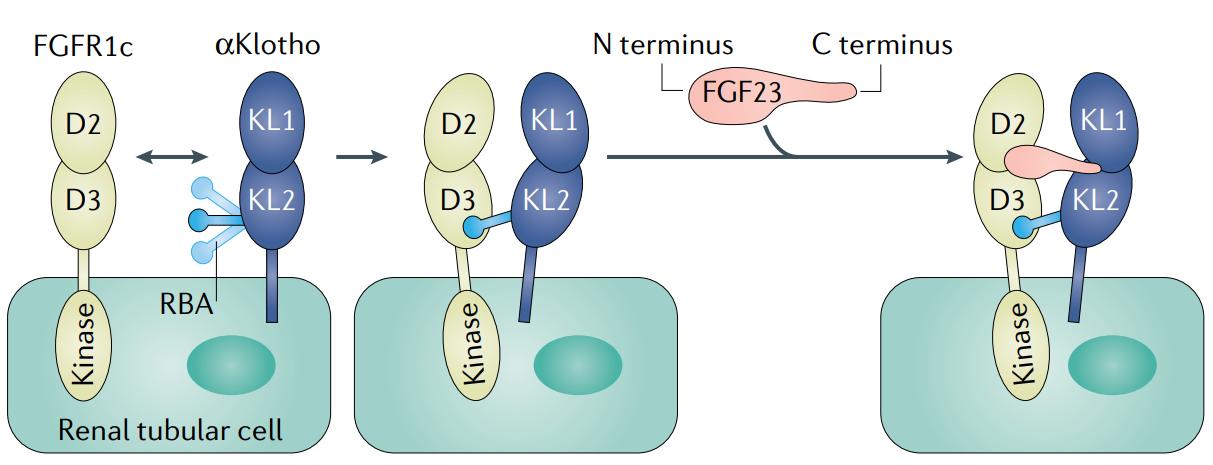What is Klotho Protein
Klotho, an intriguing protein named after the mythical Greek goddess Clotho, the spinner of life's thread, holds the key to various physiological processes. Officially known as α-Klotho, it goes by the aliases KL, LCTL, and TCF-1, signifying its multi-faceted nature. Belonging to the glycosidase enzyme family, Klotho exhibits unique structural characteristics, with a large extracellular domain featuring two tandem repeats and a short cytoplasmic tail. Recent research has unveiled its classification as a type-I transmembrane protein, shedding light on its role as a co-receptor for fibroblast growth factor (FGF) receptors.
Klotho Biological Functions and Molecular Mechanisms
The biological functions of Klotho are as diverse as its aliases. Acting as a co-receptor, it intricately modulates FGF signaling, impacting cell proliferation, survival, and differentiation. Klotho's molecular dance extends beyond FGF receptors, influencing phosphate and calcium metabolism, making it a key player in maintaining mineral homeostasis. Its anti-aging properties have sparked significant interest, as studies suggest a correlation between Klotho levels and longevity. Mechanistically, Klotho regulates insulin and insulin-like growth factor-1 signaling, showcasing its prowess in metabolic regulation.

Figure 1. Structural basis of FGF23–αKlotho–FGFR1c complex formation. (Kuro-o M, et al., 2019)
Klotho Related Signaling Pathway
Understanding the signal pathways orchestrated by Klotho unravels its influence on diverse physiological processes. The Klotho-FGF23 axis, a well-explored pathway, regulates phosphate and vitamin D metabolism, emphasizing its role in maintaining mineral balance. Additionally, Klotho's suppression of insulin and insulin-like growth factor-1 pathways showcases its involvement in metabolic regulation, providing potential therapeutic avenues for conditions like diabetes.
Klotho Related Diseases
While Klotho orchestrates symphonies of cellular harmony, its deficiency or malfunction can lead to discord. Hypoklothoemia, a condition marked by reduced Klotho levels, is associated with accelerated aging phenotypes, highlighting its pivotal role in the aging process. Moreover, studies link Klotho deficiency to chronic kidney disease, cardiovascular disorders, and neurodegenerative conditions, illuminating its significance in maintaining organ health and functionality.
Klotho's Applications in Biomedicine
The potential applications of Klotho in the biomedical realm are vast, holding promise for diagnostic development, vaccine design, and therapeutic interventions. Researchers are exploring Klotho as a biomarker for age-related diseases, offering a glimpse into an individual's physiological age. This protein's unique attributes make it a candidate for novel vaccine formulations, capitalizing on its ability to modulate FGF signaling. Moreover, Klotho's role in metabolic regulation positions it as a therapeutic target for conditions ranging from diabetes to age-related disorders.
Recommended Products
| Cat.# | Product name | Species | Source (Host) | Tag |
|---|---|---|---|---|
| KL-29904TH | Recombinant Human KL | Human | CHO | N/A |
| KL-1071H | Recombinant Human KL Protein, His&SUMO-tagged | Human | E.coli | N-His&SUMO |
| KL-386H | Recombinant Human KL, Fc-tagged | Human | HEK293 | Fc |
| KL-2155H | Recombinant Human Klotho, Extracellular Domain, Fc Chimera | Human | HEK293 | Fc |
| KL-3302H | Recombinant Human KL Protein (Glu34-Ser981), N-His tagged | Human | E.coli | N-His |
| KL-388H | Active Recombinant Human Klotho, His-tagged | Human | Mammalian cells | His |
| KL-47H | Recombinant Human KLOTHO, His-tagged | Human | CHO | His |
| KL-3220H | Recombinant Human KL Protein, His (Fc)-Avi-tagged | Human | HEK293 | His (Fc)-Avi |
| Kl-362M | Active Recombinant Mouse klotho protein, His-tagged | Mouse | CHO | His |
| KL-8667M | Recombinant Mouse KL Protein | Mouse | Mammalian Cell | His |
Reference
- Kuro-o M. The Klotho proteins in health and disease. Nature Reviews Nephrology. 2019, 15(1): 27-44.

